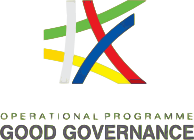 Web Content Viewer
Web Content Viewer
Integrated Territorial Investments
The ITI is a territorial instrument of the cohesion policy, which is implemented with the support of Priority 2 "Integrated Territorial Development of Regions" of the RDP 2021-2027, as well as with funds from other programmes co-financed by the European Regional Development Fund (ERDF) and the European Social Fund + (ESF+).
The aim of the ITI instrument is to foster partnership and cooperation between different municipalities, institutions and stakeholders and to implement integrated measures across administrative-territorial boundaries. Any type of project funded from different sources can participate in the ITI concepts, guided by the common specificities or development potentials of the target areas in accordance with the Integrated Territorial Development Strategies of the Level 2 planning regions.
An ITI idea can be implemented in more than one municipality, more than one region or even more than one country. The RD 2021-2027 will prioritise joint projects with partners from other countries and will fund activities in other countries when they contribute to the programme objectives. In order to achieve a higher degree of synergies, INTERREG projects can also be part of the ITI concepts.
The territorial scope of Priority 2 of the RDP includes 40 urban municipalities - Vratsa, Lovech, Lom, Montana, Troyan, Gabrovo, Gorna Oryahovitsa, Sevlievo, Razgrad, Svishtov, Silistra, Dobrich, Targovishte, Shumen, Sliven, Yambol, Nova Zagora, Aytos, Karnobat, Kazanlak, Svilengrad, Harmanli, Dimitrovgrad, Kardzhali, Haskovo, Asenovgrad, Velingrad, Smolyan, Pazardzhik, Peshtera, Panagyurishte, Karlovo, Botevgrad, Gotse Delchev, Dupnitsa, Kyustendil, Pernik, Petrich, Samokov, Sandanski.
At the same time, all rural municipalities are eligible for funding for measures outside the scope of the Strategic Plan for Agricultural and Rural Development. In addition, the ten large urban municipalities (Sofia, Plovdiv, Varna, Burgas, Ruse, Pleven, Stara Zagora, Veliko Tarnovo, Vidin, Blagoevgrad) will also be able to participate in the implementation of the approach with funds from Priority 1 of the RDP "Integrated Urban Development".
The following types of activities will be supported by the RDP:
- Measures to promote economic activity, including infrastructure for business and entrepreneurship (including buildings), business and industrial parks;
- Energy efficiency and sustainable renovation of residential and public buildings;
- Sustainable mobility, including urban mobility;
- Road infrastructure, functional links and road safety;
- Green urban infrastructure and security in public spaces;
- Education infrastructure for pre-school, school and higher education, including kindergartens;
- Health and social infrastructure;
- Housing;
- Culture, sport and tourism;
Other activities eligible under ERDF and identified on the basis of a bottom-up approach, subject to a clear demarcation procedure with other programmes.
Eligible beneficiaries are a wide range of stakeholders, and priority will be given to partnerships operating in the territory concerned, including state bodies, regional administrations and municipal authorities; representatives of civil society (NGOs, employers' and trade union organisations, foundations); representatives of business (enterprises), the scientific community; condominium building owners' associations and other local stakeholders.

